Calculators

EMFast Web
The EMFast Web application calculates electric and magnetic fields for electric power transmission and distribution lines. It was developed for individuals requiring easy to use and accurate software for applied research and other applications.
Research Result Summaries
Latest results from ongoing tasks

Leveraging Existing Infrastructure This paper outlines opportunities and challenges faced in efforts to increase the capacity of existing transmission ROWs and introduces approaches to better utilize ROWs. It is based upon the experience EPRI’s transmission team has gained working with individual members to execute increased power flow projects. These studies include the detailed modeling, analysis, laboratory tests, and field implementations needed to evaluate cost, reliability, compatibility, and future maintenance needs.

Reconductoring, Tensioning, and Advanced Conductor Technologies for Increasing the Capacity of Transmission Lines The need and range of options for upgrading the capacity of existing overhead transmission lines or building new high-capacity lines is reviewed in The Electric Power Research Institute’s (EPRI’s) White Paper: Increasing Transmission Capacity on Transmission Lines and Rights-of-Way. The upgrade options discussed in the paper included re-rating, dynamic and ambient adjusted ratings, voltage upgrades and AC to DC conversion. This White Paper provides a more in-depth discussion on conductor technologies and techniques for both increasing the capacity of existing lines or building new high-capacity new lines.

Increasing Transmission Line Capacity Through Ratings There are several low-cost methods to add capacity to overhead transmission lines. These include more accurate calculation of ratings, ambient adjusted or dynamic ratings, and conductor coatings. Traditional overhead lines use static ratings based on assumptions related to worst-case conditions, such as high ambient temperature and low wind speed. When conditions are not the worst case, more current could flow down overhead lines without negative consequences. This white paper provides an overview of how static ratings have traditionally been calculated and describes different approaches for addressing ratings to increase capacity. It also lists the critical considerations and gaps when implementing these approaches and describes ongoing research and field testing presently underway to close these gaps.
Reference Information

Optimal Line Tension and Conductor Strength (Op10) The design conductor tension utilized by overhead line designers is typically a predefined given input, which is determined by conventional adopted norms. However, conductor tension affects multiple aspects of overhead line cost and performance, including:
- Support height
- Conductor clearance
- Strain tower loads
- Longitudinal loads
- Vibration levels
- Right of way width
- Conductor strength
Op10 is a software program that has been developed to help engineers optimize conductor tension with minimal effort while considering the broad range of line parameters listed above.
Videos
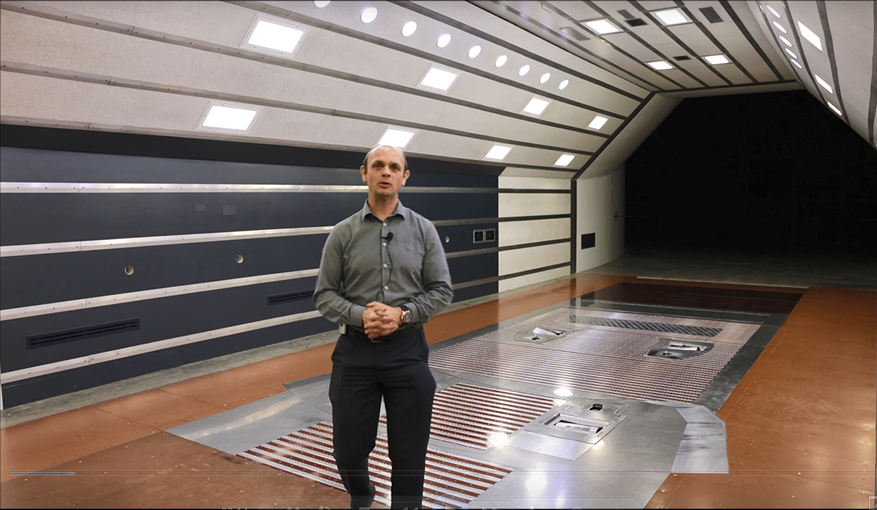
Mitigating Vortex Induced Vibration on Steel Pole Davit Arms
EPRI is conducting research as part of a supplemental project on steel pole davit arms and their vibration performance. This project has involved research into vortex induced vibration, development of a software tool to assess risk, and assessment of the fatigue life of davit arms. This video depicts EPRI’s test setup at an area wind tunnel where the onset of vortex induced vibration was being investigated.
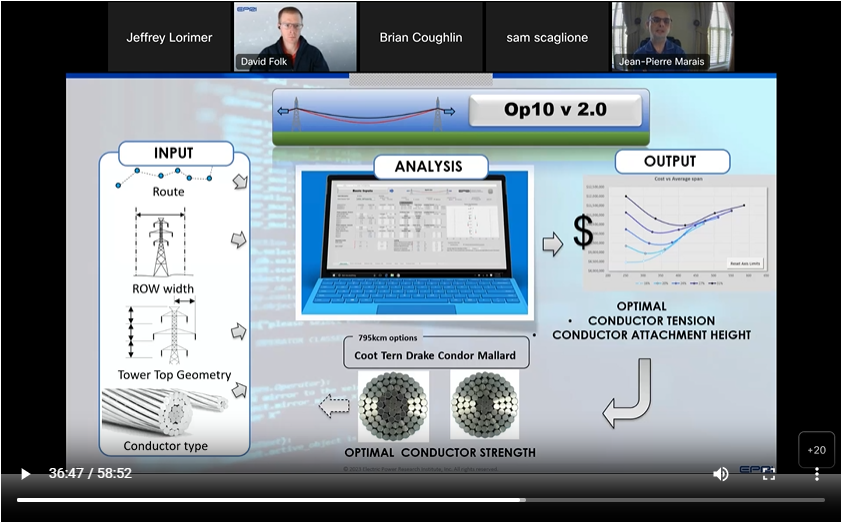
EPRI Software Demo: Op10 Version 2.0 – Optimal Line Tension Calculator
Over the past few years EPRI has been in development of a software program Op10 that may be used to optimize transmission line tension against a number of line parameters including structure loading, conductor vibration, clearances and more. In 2022, EPRI released version 2.0 of Op10 that included a simplified, streamlined module for performing quick conductor tension checks. Here is a recording from a software demo given in February 2023 by EPRI Technical Executive Pierre Marais on the features of Op10v2.0
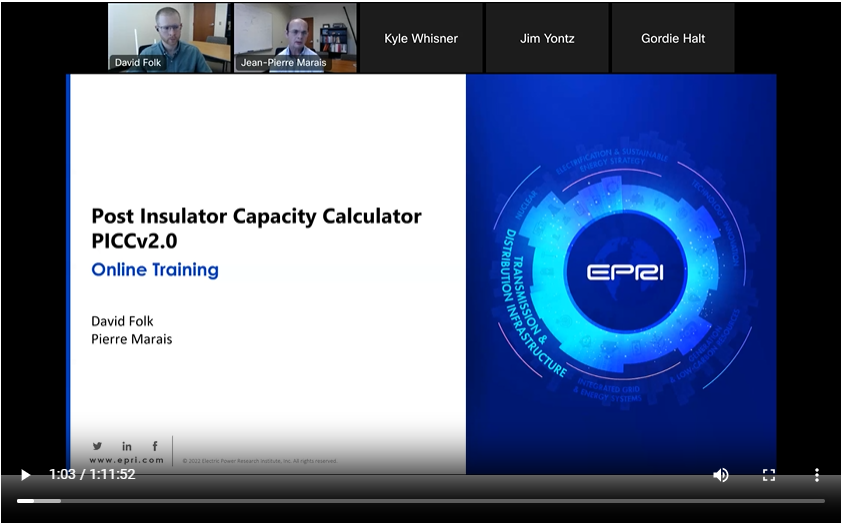
EPRI Software Demo: Post Insulator Capacity Calculator (PICC) version 2.0
As part of a supplemental project for P25.007, EPRI has conducted extensive testing on the mechanical strength of polymer insulator systems. This testing has culminated in the PICC software used for calculating interaction diagrams for post and braced post polymer insulator systems. In this video from December 2022, EPRI engineers Pierre Marais and David Folk discuss EPRI’s insulator testing program and provide a demo on PICCv2.0.
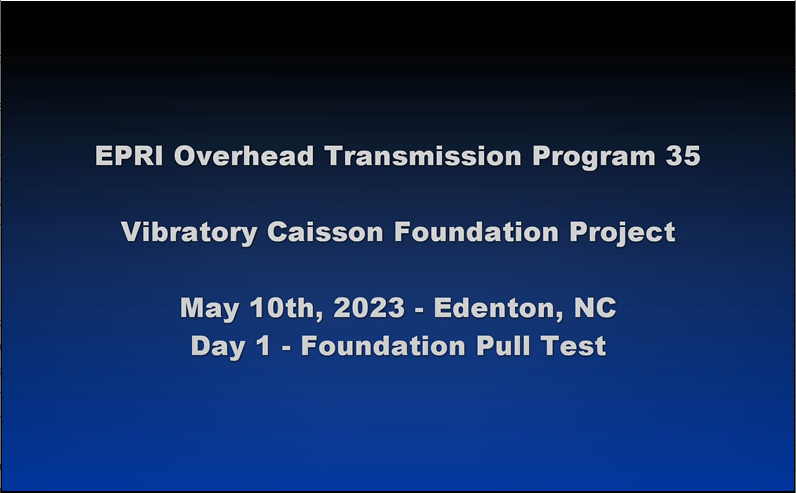
Vibratory Caisson Foundation Pull Test
In May 2023 in Edenton, NC, EPRI conducted a lateral test to failure of a vibratory caisson foundation. While these foundations have commonly been used in the transmission industry, there has been very few tests completed to support existing design practices. This video, taken as part of EPRI’s Design and Installation of Vibrated Steel Caissons Supplemental Project, depicts 2 days of a lateral pull test with synchronous load tracking.
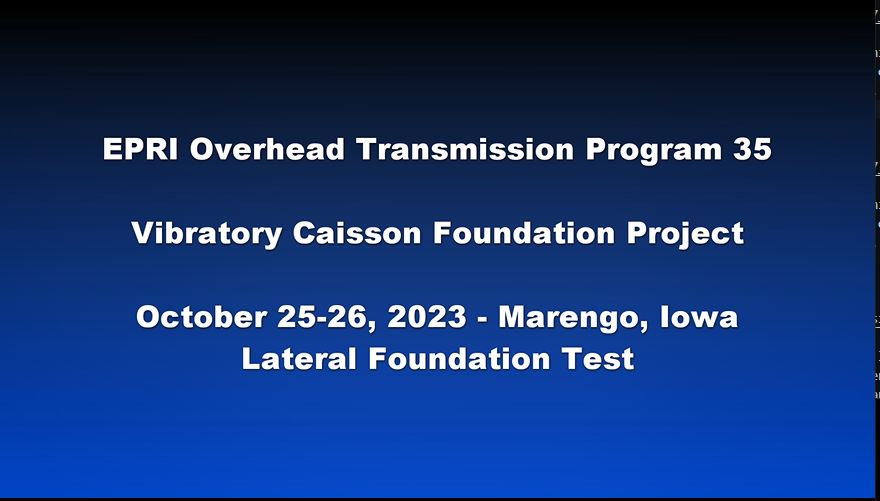
Vibratory Caisson Foundation Test - Marengo, IA
In October 2023 in Marengo, IA, EPRI conducted its third foundation test to failure as part of its Design and Installation of Vibrated Steel Caissons supplemental project. These tests help EPRI engineers understand the soil mechanics of laterally loaded vibrated steel caissons in an effort to develop design procedures for utility engineers. This video depicts an overview of the test including caisson installation, the site layout, and the lateral test to failure.